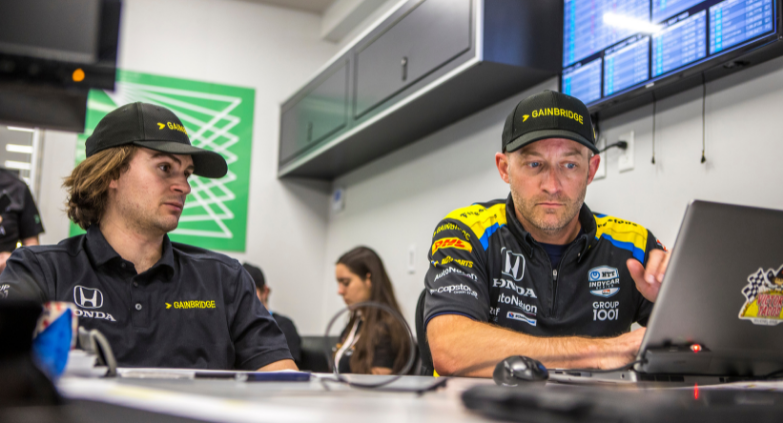Zapata Computing Building Andretti Autosport’s Race-Time Analytics Infrastructure for Quantum-Readiness

Just four races into the NTT INDYCAR
SERIES season, Andretti Autosport and Zapata
Computing have identified valuable use cases
— and approaches to address them — regarding the use of accelerated analytic
capabilities to realize a real-time performance edge on race day. Engineers,
data scientists and race strategists from both organizations are working
side-by-side and using Zapata’s Orquestra® platform
for building and deploying quantum-ready applications® in the Zapata
Computing | Andretti Autosport Race Analytics Command Center (R.A.C.C.) before,
during and after each race.
The results to date have identified
new approaches that can help generate predictive insights, measure and optimize
performance and inform race strategy. Specifically, the teams are capitalizing
on critical Andretti Autosport data sets to build advanced ML models to better
understand tire degradation analysis, identify fuel savings opportunities and
improve yellow flag predictive modeling.
“Andretti Autosport’s core business
is motorsports engineering, and we’ve relied on conventional data handling and
analysis specific to our field for decades,” said Eric Bretzman, technical
director at Andretti Autosport. “Each year we collect and process more
information than the last. Modernizing our infrastructure will add efficiency
and power. There are critical new challenges on our job list today that we are
fortunate to share with Zapata Computing to set the direction of our future
engineering infrastructure.”
To date the team has discovered
several analytical strategies that could give Andretti Autosport a competitive
edge in the future. Along with Andretti’s engineering team, Zapata engineers
are constructing a roadmap of additional use cases to explore, including:
·
Deploying a
hybrid infrastructure that leverages both cloud and edge
computing capabilities. Orquestra helps this initiative because deployment is
natively hybrid multi-cloud and on premise/edge.
·
Developing
enhanced visualization capabilities to
accelerate decision making on the racetrack while monitoring model performance
and adding model interpretability.
·
Exploring
acceleration and enhancement of optimization tasks and time series forecasting via quantum-inspired and quantum-enabled algorithms.
“Each race can potentially generate
terabytes of data measuring all facets of the experience that you can imagine,
such as the vehicle, track conditions, the driver, the pit crew and more,” said
Yudong Cao, CTO of Zapata Computing. “The insights hidden in those data points
are invaluable when it comes to squeezing out every ounce of performance
possible on the racetrack. Most of what we are using today to ‘connect the
dots’ is driven by advanced machine learning on classical computers, but we’re
already seeing some tremendous opportunities to implement quantum-inspired methods
on classical hardware—and then use those methods on quantum hardware backends
as they mature on their path to being useful in enterprise production
environments.”
